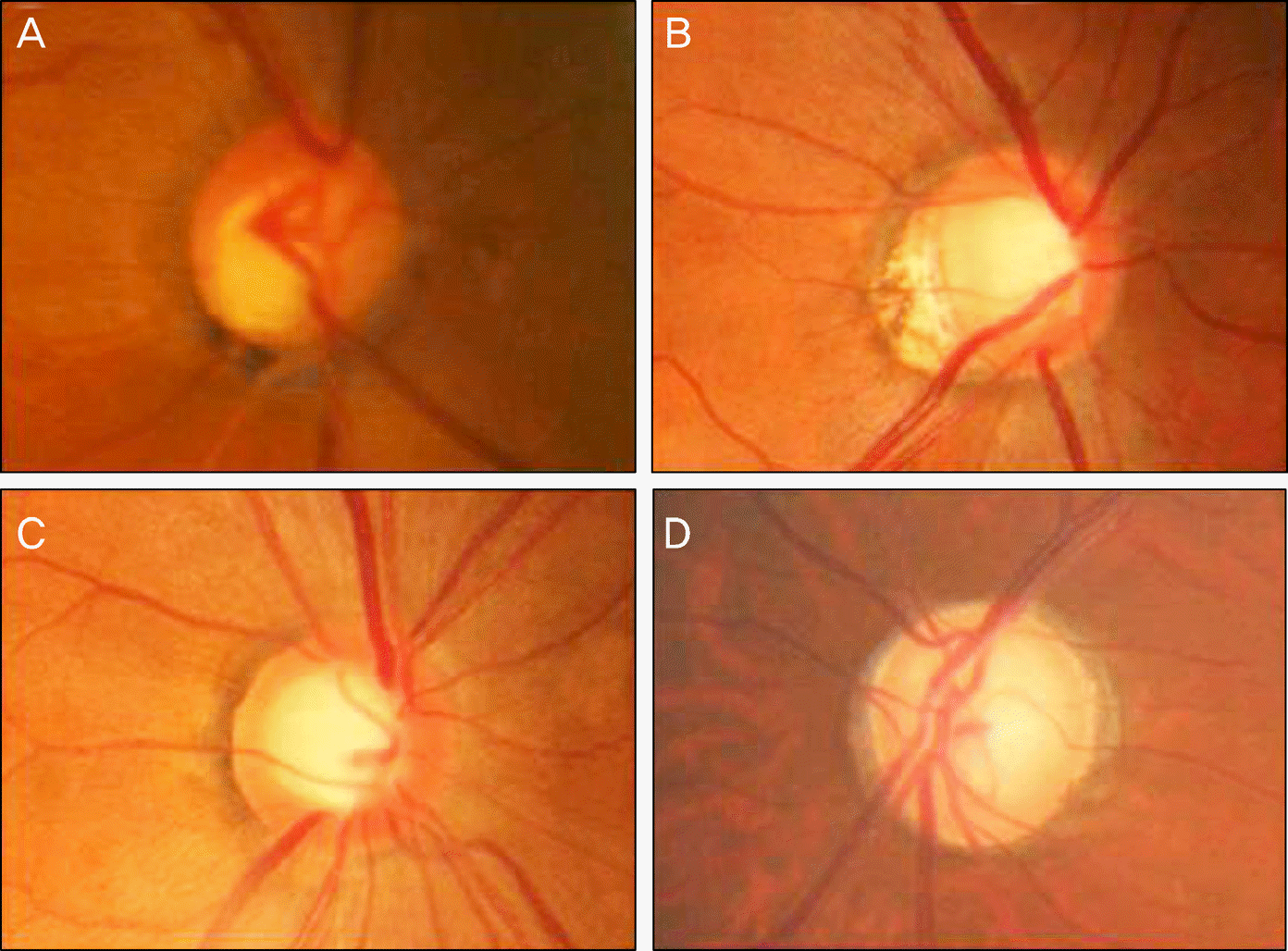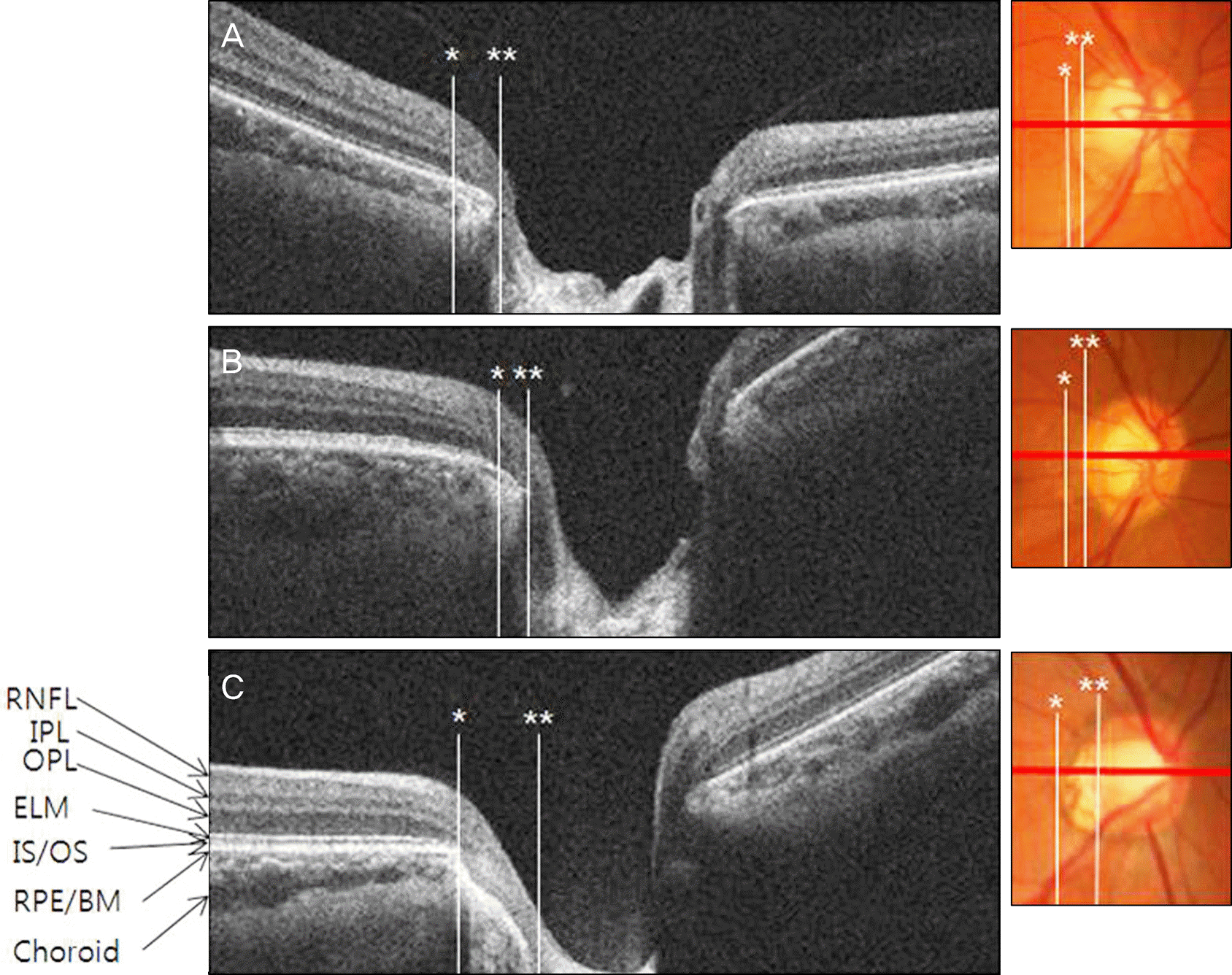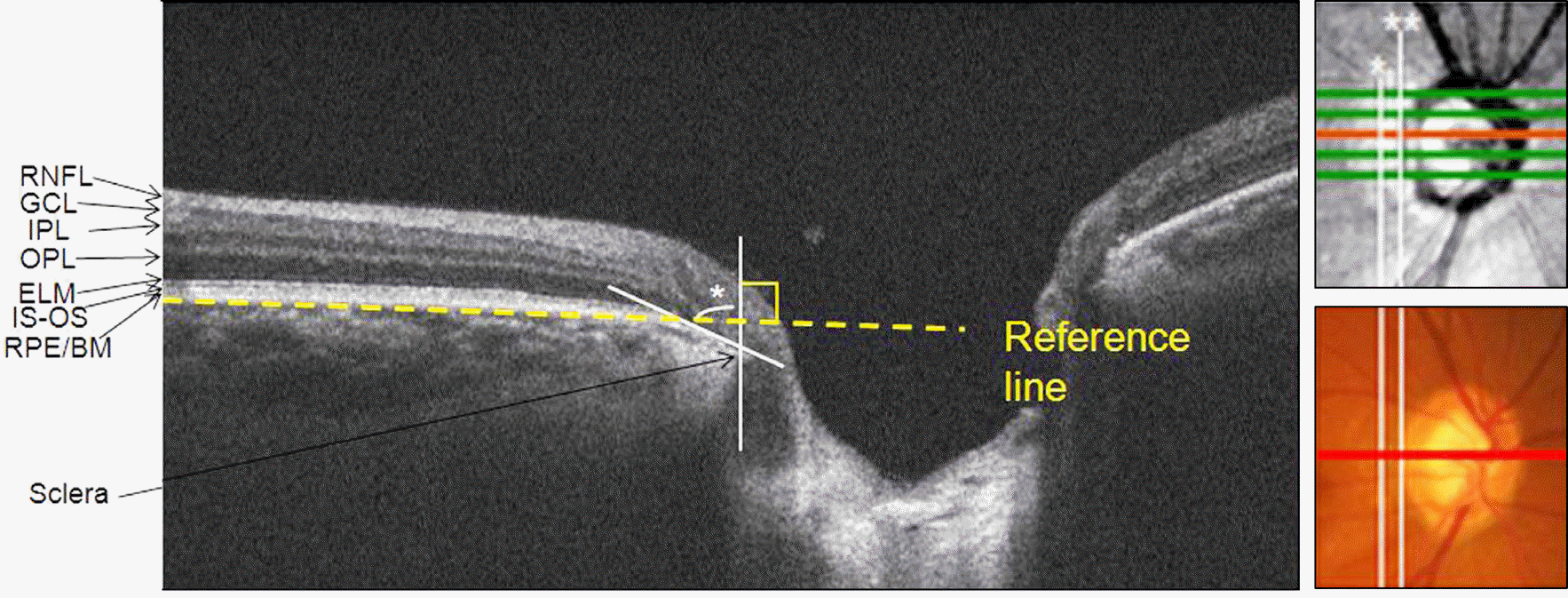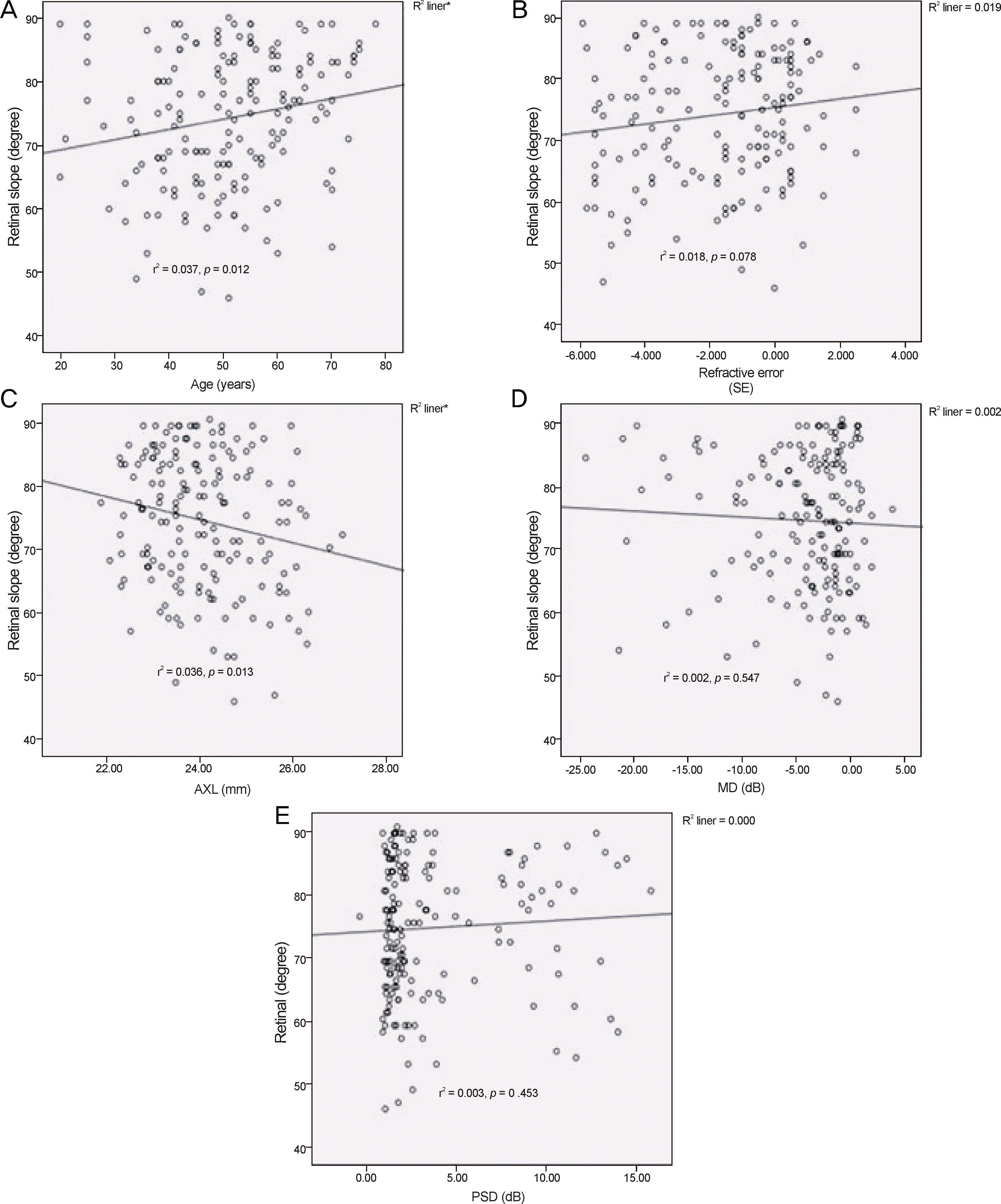1. Sommer A, Katz J, Quigley HA, et al. Clinically detectable nerve fiber atrophy precedes the onset of glaucomatous field loss. Arch Ophthalmol. 1991; 109:77–83.

2. Park KH, Tomita G, Liou SY, Kitazawa Y. Correlation between peripapillary atrophy and optic nerve damage in normal-tension glaucoma. Ophthalmology. 1996; 103:1899–906.

3. Jonas JB, Naumann GO. Parapapillary chorioretinal atrophy in normal and glaucoma eyes. II. Correlations. Invest Ophthalmol Vis Sci. 1989; 30:919–26.
4. Uchida H, Yamamoto T, Tomita G, Kitazawa Y. Peripapillary atro- phy in primary angle-closure glaucoma: a comparative study with primary open-angle glaucoma. Am J Ophthalmol. 1999; 127:121–8.
5. Tezel G, Kass MA, Kolker AE, Wax MB. Comparative optic disc analysis in normal pressure glaucoma, primary open-angle glauco- ma, and ocular hypertension. Ophthalmology. 1996; 103:2105–13.
6. Kono Y, Zangwill L, Sample PA, et al. Relationship between parapapillary atrophy and visual field abnormality in primary open-angle glaucoma. Am J Ophthalmol. 1999; 127:674–80.

7. Lee KY, Tomidokoro A, Sakata R, et al. Cross-sectional anatomic configurations of peripapillary atrophy evaluated with spectral do- main-optical coherence tomography. Invest Ophthalmol Vis Sci. 2010; 51:666–71.
8. Nassif N, Cense B, Park B, et al. In vivo high-resolution video-rate spectral-domain optical coherence tomography of the human retina and optic nerve. Opt Express. 2004; 12:367–76.

9. Manjunath V, Shah H, Fujimoto JG, Duker JS. Analysis of peri- papillary atrophy using spectral domain optical coherence tomography. Ophthalmology. 2011; 118:531–6.
10. Na JH, Moon BG, Sung KR, et al. Characterization of peripapillary atrophy using spectral domain optical coherence tomography. Korean J Ophthalmol. 2010; 24:353–9.

11. Geijssen HC, Greve EL. The spectrum of primary open angle glaucoma. I: Senile sclerotic glaucoma versus high tension glaucoma. Ophthalmic Surg. 1987; 18:207–13.

12. Geijssen HC, Greve EL. Focal ischaemic normal pressure glauco- ma versus high pressure glaucoma. Doc Ophthalmol. 1990; 75:291–301.
13. Drance SM, et al. What can we learn from the disc appearance about the risk factors in glaucoma? Can J Ophthalmol. 2008; 43:322–7.

14. Broadway DC, Nicolela MT, Drance SM. Optic disk appearances in primary open-angle glaucoma. Surv Ophthalmol. 1999; 43(Suppl 1):S223–43.

15. Nicolela MT, Drance SM. Various glaucomatous optic nerve ap- pearances: clinical correlations. Ophthalmology. 1996; 103:640–9.
16. Hayashi K, Tomidokoro A, Lee KY, et al. Spectral-domain optical coherence tomography of beta-zone peripapillary atrophy: influ- ence of myopia and glaucoma. Invest Ophthalmol Vis Sci. 2012; 53:1499–505.
17. Curcio CA, Saunders PL, Younger PW, Malek G. Peripapillary chorioretinal atrophy: Bruch's membrane changes and photo- receptor loss. Ophthalmology. 2000; 107:334–43.
18. Jonas JB, Nguyen XN, Gusek GC, Naumann GO. Parapapillary chorioretinal atrophy in normal and glaucoma eyes. I. Morphometric data. Invest Ophthalmol Vis Sci. 1989; 30:908–18.
19. Jonas JB, Fernández MC, Naumann GO. Glaucomatous para- papillary atrophy. Occurrence and correlations. Arch Ophthalmol. 1992; 110:214–22.
20. Jonas JB, Gründler AE. Correlation between mean visual field loss and morphometric optic disk variables in the open-angle glaucomas. Am J Ophthalmol. 1997; 124:488–97.

21. Park SC, De Moraes CG, Tello C, et al. In-vivo microstructural anatomy of beta-zone parapapillary atrophy in glaucoma. Invest Ophthalmol Vis Sci. 2010; 51:6408–13.








 PDF
PDF ePub
ePub Citation
Citation Print
Print


 XML Download
XML Download